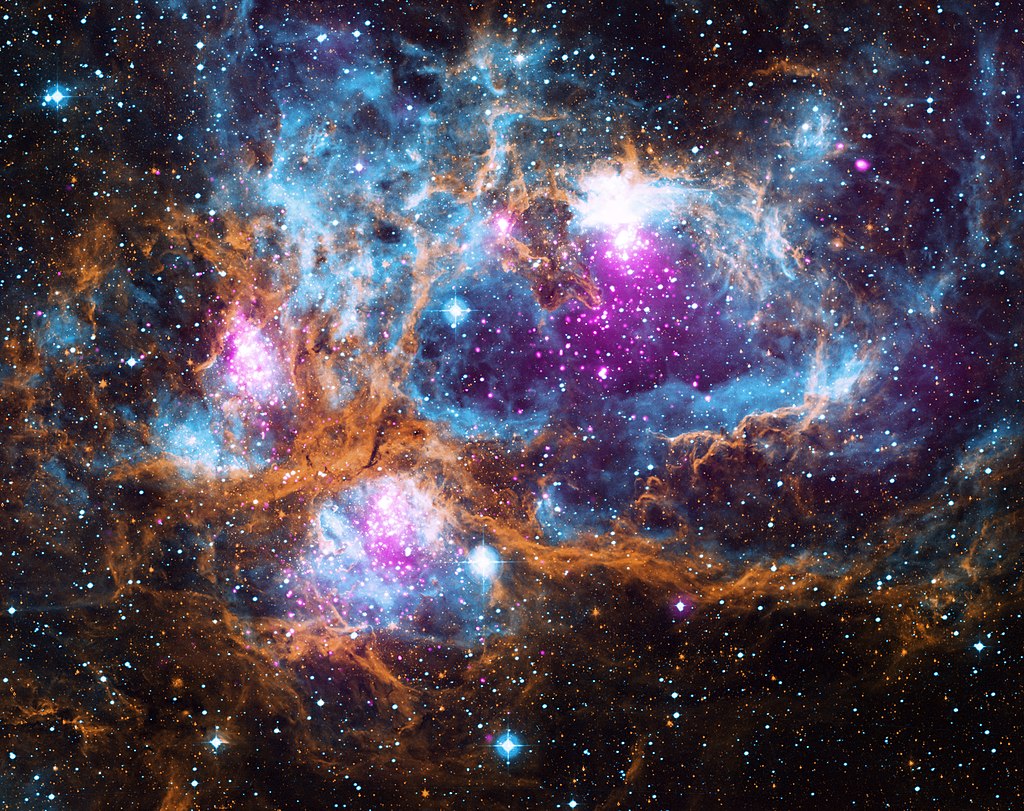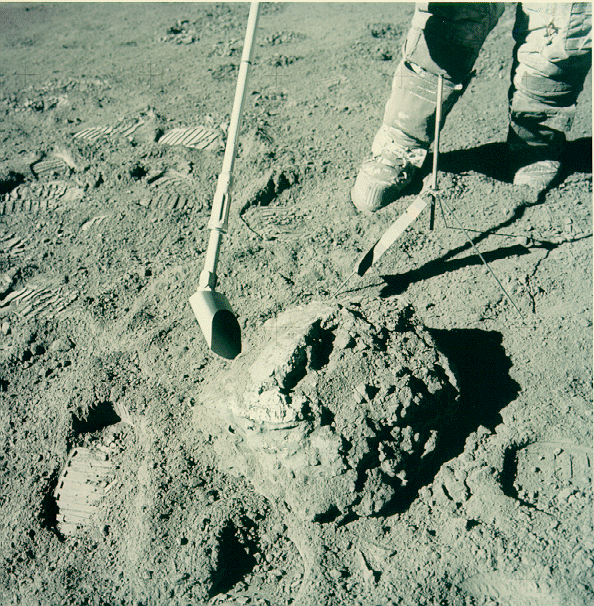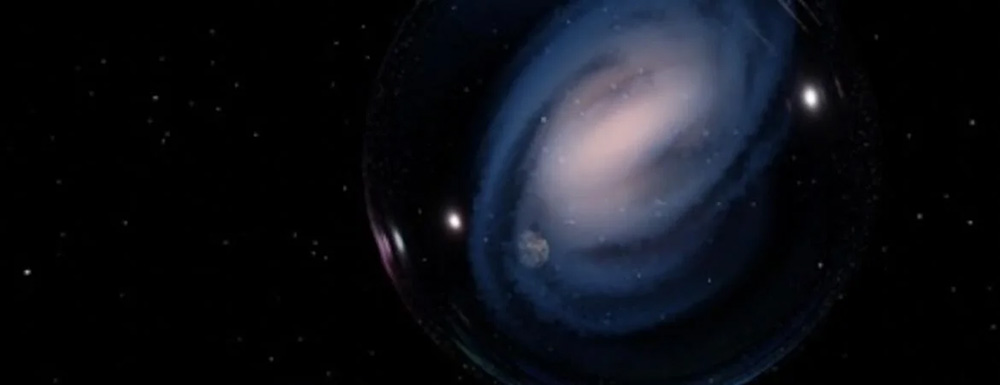The Orion Nebula is a favourite among stargazers, certainly one of mine. It’s a giant stellar nebula out of which, hot young stars are forming. Telescopically to the eye it appears as a grey/green haze of wonderment but cameras reveal the true glory of these star forming regions. The Sun was once part of such an object and astronomers have been probing their secrets for decades. Now, a new paper presents the results from a detailed study from the James Webb Space Telescope (JWST) that has been exploring planet forming disks around stars in the Lobster Nebula.
Continue reading “JWST Reveals Protoplanetary Disks in a Nearby Star Cluster”Apollo Samples Contain Hydrogen Hurled from the Sun
According to the U.S. National Academies of Sciences, Engineering, and Medicine, men should drink 3.7litres of water a day and women 2.7litres. Now imagine a crew of three heading to the Moon for a 3 week trip, that’s something of the order of 189 litres of water, that’s about 189 kilograms! Assuming you have to carry all the water rather than recycle some of it longer trips into space with more people are going to be logistically challenging for water carriage alone. Researchers from the U.S. Naval Research Laboratory (NRL) have discovered lunar rocks with hydrogen in them which, when combined with lunar oxygen provide a possibly supply for future explorers.
Continue reading “Apollo Samples Contain Hydrogen Hurled from the Sun”Next Generation Space Telescopes Could Use Deformable Mirrors to Image Earth-Sized Worlds
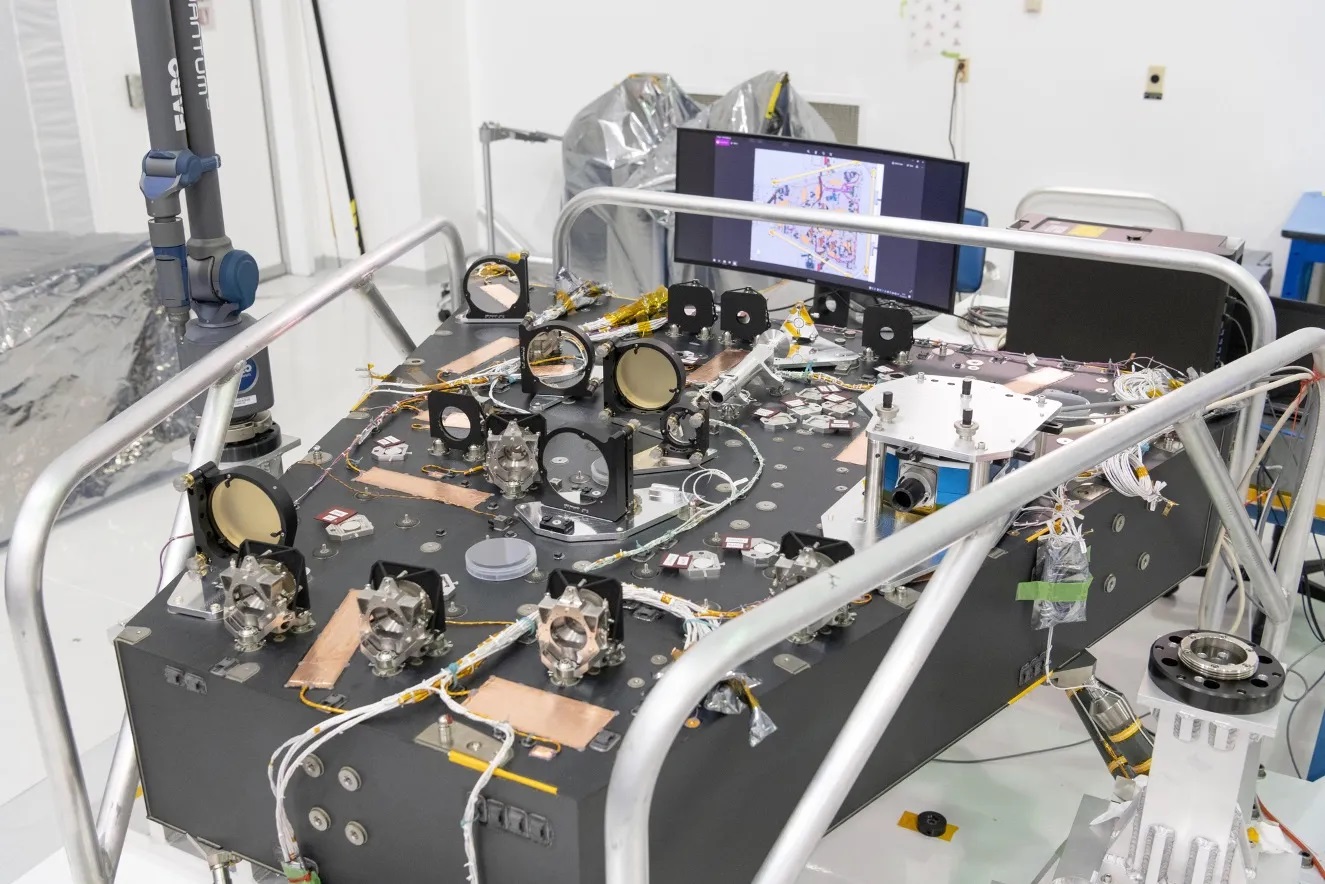
Observing distant objects is no easy task, thanks to our planet’s thick and fluffy atmosphere. As light passes through the upper reaches of our atmosphere, it is refracted and distorted, making it much harder to discern objects at cosmological distances (billions of light years away) and small objects in adjacent star systems like exoplanets. For astronomers, there are only two ways to overcome this problem: send telescopes to space or equip telescopes with mirrors that can adjust to compensate for atmospheric distortion.
Since 1970, NASA and the ESA have launched more than 90 space telescopes into orbit, and 29 of these are still active, so it’s safe to say we’ve got that covered! But in the coming years, a growing number of ground-based telescopes will incorporate adaptive optics (AOs) that will allow them to perform cutting-edge astronomy. This includes the study of exoplanets, which next-generation telescopes will be able to observe directly using coronographs and self-adjusting mirrors. This will allow astronomers to obtain spectra directly from their atmospheres and characterize them to see if they are habitable.
Continue reading “Next Generation Space Telescopes Could Use Deformable Mirrors to Image Earth-Sized Worlds”The Early Universe Had No Problem Making Barred Spiral Galaxies
Spiral galaxies like the Milky Way are like cosmic snowflakes—no two are exactly alike. For many years, astronomers thought spirals couldn’t exist until the universe was about half its present age. Now, a newly discovered galaxy in the early Universe is challenging that idea.
Continue reading “The Early Universe Had No Problem Making Barred Spiral Galaxies”NASA Tests its Next-Generation Mars Helicopter Blades

While NASA’s Ingenuity Mars Helicopter continues to break records for both airspeed and altitude while it explores Jezero Crater on the Red Planet, NASA engineers back on Earth are hard at work testing carbon fiber blades for next-generation Mars helicopters that could exceed the performance of Ingenuity on future missions to Mars, specifically with the planned Mars Sample Return mission that NASA hopes to accomplish sometime in the 2030s.
Continue reading “NASA Tests its Next-Generation Mars Helicopter Blades”Where are All the Double Planets?
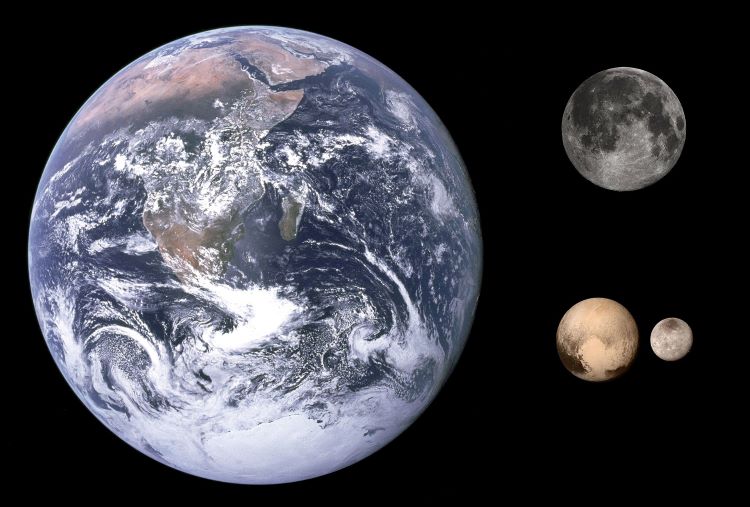
A recent study published in the Monthly Notices of the Royal Astronomical Society examines formation mechanisms for how binary planets—two large planetary bodies orbiting each other—can be produced from a type of tidal heating known as tidal dissipation, or the energy that is shared between two planetary bodies as the orbit close to each other, which the Earth and our Moon experiences. This study comes as the hunt for exomoons and other satellites orbiting exoplanets continues to expand and holds the potential to help astronomers better understand the formation and evolution of exoplanets and their systems. So, why is studying binary planets specifically important?
Continue reading “Where are All the Double Planets?”Ariane 6 Fires its Engines, Simulating a Flight to Space

Since 2010, the European aerospace manufacturer ArianeGroup has been developing the Ariane 6 launch vehicle, a next-generation rocket for the European Space Agency (ESA). This vehicle will replace the older Ariane 5 model, offering reduced launch costs while increasing the number of launches per year. In recent years, the ArianeGrouip has been putting the rocket through its paces to prepare it for its first launch, which is currently scheduled for 2024. This past week, on Wednesday, November 23rd, the Ariane 6 underwent its biggest test to date as ground controllers conducted a full-scale dress rehearsal.
Continue reading “Ariane 6 Fires its Engines, Simulating a Flight to Space”Dark Matter Could Help Solve the Final Parsec Problem of Black Holes
When galaxies collide, their supermassive black holes enter into a gravitational dance, gradually orbiting each other ever closer until eventually…merging. We know they merge because we see the gravitational beasts that result, and we have detected the gravitational waves they emit as they inspiral. But the details of their final consummation remain a mystery. Now a new paper suggests part of that mystery can be solved with a bit of dark matter.
Continue reading “Dark Matter Could Help Solve the Final Parsec Problem of Black Holes”What Would Happen to Earth if a Rogue Star Came Too Close?

Stars are gravitationally fastened to their galaxies and move in concert with their surroundings. But sometimes, something breaks the bond. If a star gets too close to a supermassive black hole, for example, the black hole can expel it out into space as a rogue star.
What would happen to Earth if one of these stellar interlopers got too close?
Continue reading “What Would Happen to Earth if a Rogue Star Came Too Close?”Vera Rubin Will Find Binary Supermassive Black Holes. Here’s How.
When galaxies merge, we expect them to produce binary black holes (BBHs.) BBHs orbit one another closely, and when they merge, they produce gravitational waves that have been detected by LIGO-Virgo. The upcoming Vera Rubin Observatory should be able to find them before they merge, which would open a whole new window into the study of galaxy mergers, supermassive black holes, binary black holes, and gravitational waves.
Continue reading “Vera Rubin Will Find Binary Supermassive Black Holes. Here’s How.”
